NAS drives (Network Attached Storage) continue to be a useful, or often essential, piece of tech for many users at home or in the office. And if you’re looking for a new one then you’ve come to the right place as we have the best NAS drive you can buy for personal cloud storage and more.
NAS drives can be used to back up and store files such as music, documents, video but a lot more. You can install apps on them so they do things like run your home security cameras, download files automatically and even host a website.
Synology is well-known for making some of the best NAS drives, but there are plenty of great alternatives that are often cheaper from the likes of QNAP, TerraMaster, Western Digital and others. Sadly, the competition isn’t so strong these days with nothing new from the likes of Drobo, Netgear, Seagate or Buffalo.
We’ve reviewed and ranked them here so these are the best NAS drives for Plex at home, back up in the office and many more uses. Need a more traditional drive? Check our chart of the best SSDs and best portable hard drives and SSDs.
Best NAS drives 2024
1. Synology DiskStation DS223j – Best Overall
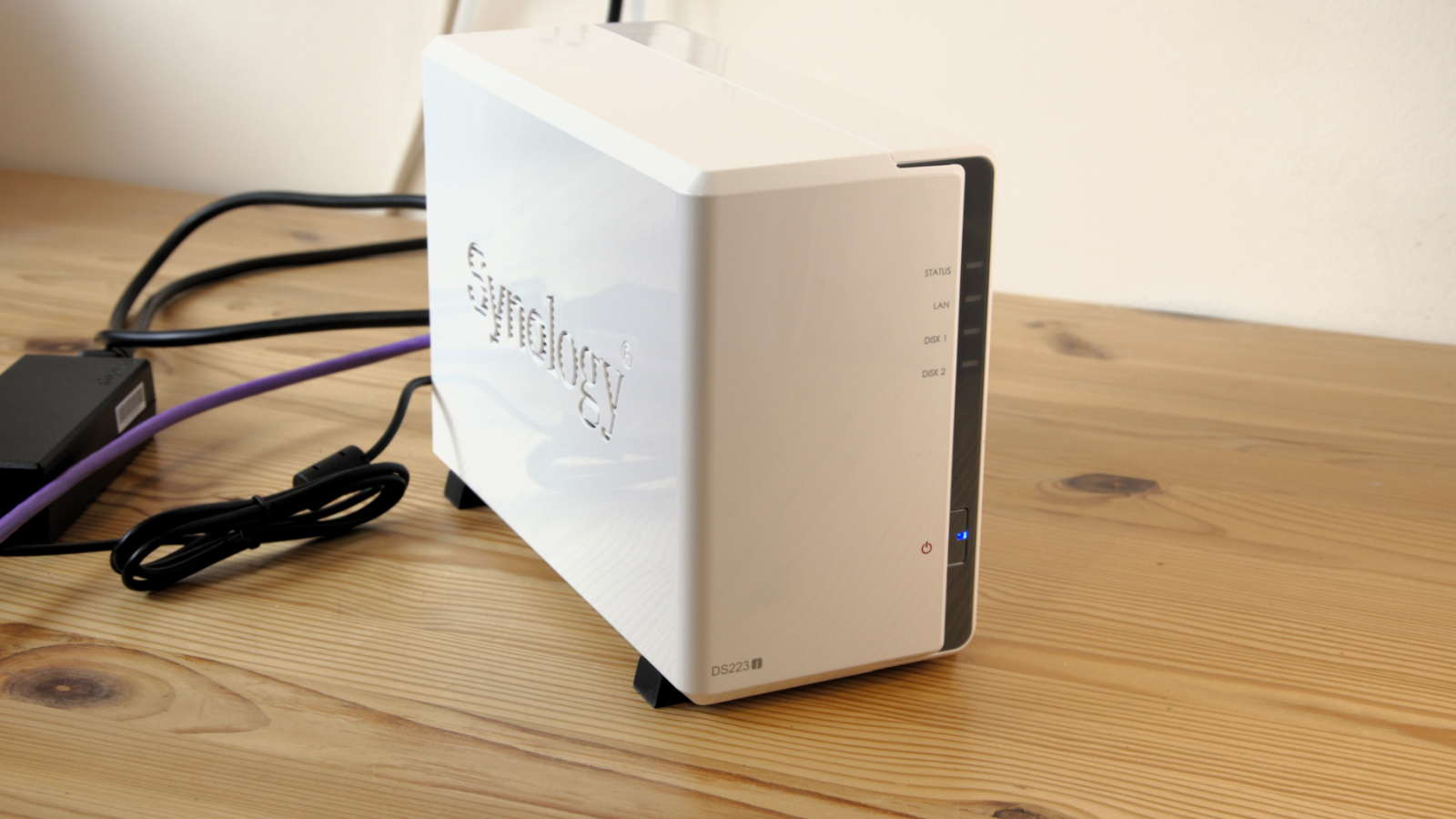
Pros
- DSM 7.2 software
- A better CPU
- 1GB RAM
- Docker support
Cons
- Accessory needed to fit 2.5in drives
- Only 1GbE LAN
Hardware is one thing but software is critical these days and you still can’t beat Synology on that front in the world of NAS drives.
The DS223j comes with DSM 7.2 which comes with a plethora of excellent features and is simply better than the competition in just about every way.
There’s not much of an upgrade compared to older models but that doesn’t matter too much when the better CPU and additional RAM make for smooth performance running multiple apps.
While the DS223j will be an obvious choice for many users, there is one sticking point and that’s the limitation of 1GbE connectivity. Synology is being stubborn on this point so if you want to take advantage of 2.5GbE or better, perhaps for dumping large video files quicker, then look to affordable rivals from the likes of Asustor and TerraMaster.
2. Asustor Nimbustor 2 Gen2 (AS5202T) – Best Synology Alternative
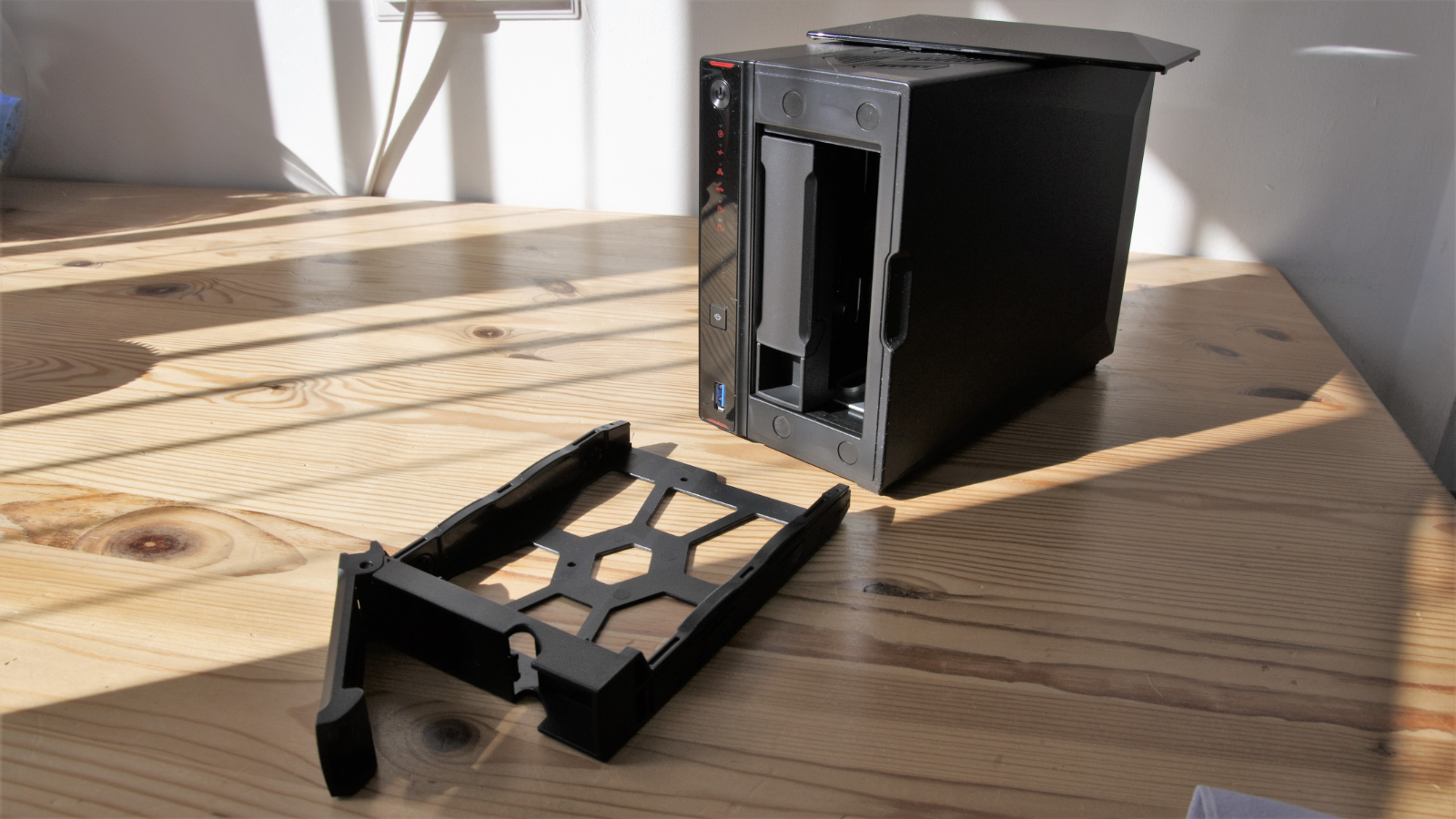
Pros
- 4 NVMe drive slots
- Dual 2.5GbE LAN port
- Expandable RAM
- SMB Multichannel
Cons
- Needs two M.2 drives for read/write caching
- No M.2 2230 support
- Sub-par software
The AS5402T model number is slightly confusing for this Gen2 as the hardware overhaul warrants a new name, but the Nimbustor 2 Gen2 is an excellent NAS drive nonetheless.
It’s on the expensive side of things after a price rise but may be a worthwhile investment, especially considering how Asustor has has baked flexibility into this design meaning it can easily be repurposed down the line.
The hardware on offer here is game changing with a much improved Intel processor, significantly more bandwidth with eight PCIe 3.0 lanes and no less than USB-C 3.2 Gen 2. And there’s still dual 2.5GbE LAN ports and the HDMI 2.0b output.
What’s a shame is the software doesn’t match up with revamps needed in various ways, meaning rivals might still be a better choice if you don’t need the latest and greatest specs.
3. QNAP HS-264 – Best NAS for Media Streaming

Pros
- Powerful platform
- Dual 2.5GbE LAN
- 8GB DDR4 RAM
- Silent operation
Cons
- Zero upgrades
- No M.2 slot for caching
- Remote control not included
It’s fairly pricey but if the HS-264 fits the bill then it could well be worth the investment.
This NAS looks more like a set-top box and fittingly so since it’s designed as a multimedia centre for your home. It will look perfectly at home in your TV unit and fit far better than a traditional NAS.
It runs silently, outputs 4K via HDMI and has impressive specs along with a powerful platform. The lack of an included remote control will be the main downside for most users.
4. Synology DiskStation DS723+ – Most Powerful 2-bay NAS
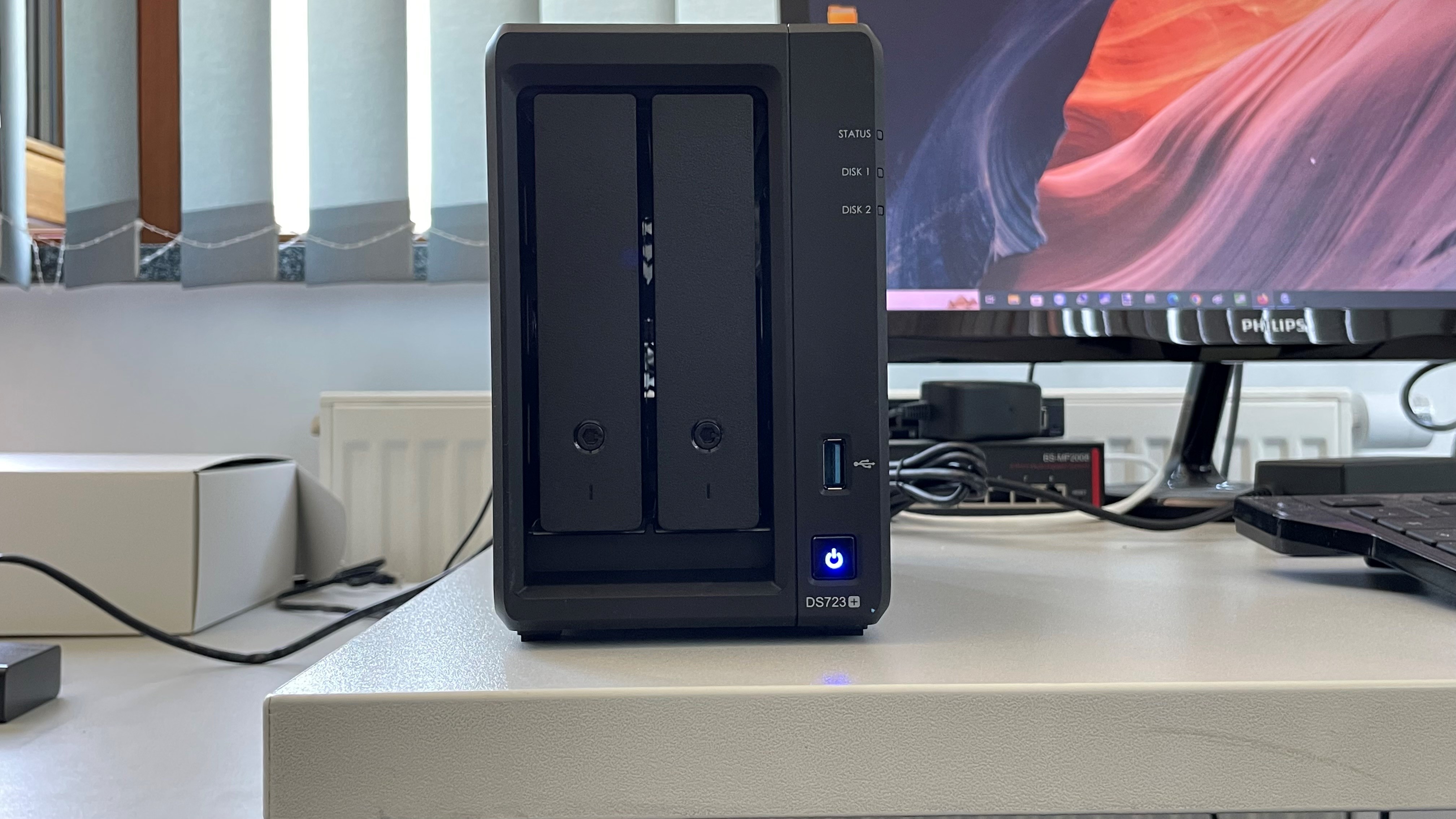
Pros
- Powerful NAS
- Compact design
- PCIe slot for 10GbE card
- 2 slots for NVMe SSDs
Cons
- Expensive
- 10GbE card costs extra
Power users looking for a 2-bay NAS should definitely consider the DS723+.
There’s a powerful AMD Ryzen processor to keep things moving along nicely as well as a hefty 2GB of RAM. Furthermore, there are two slots for NVMe SSDs so you’re not limited to traditional hard drives or SSDs.
Like the DS223j, you get the unrivalled usability and features of Synology’s DSM 7.2 software which is a big lure.
However, as impressive as the DS723+ is, the device is fairly expensive. And you will need to buy the optional card to upgrade to 10GbE connectivity if you don’t want to be stuck with basic 1GbE speeds.
5. Asustor Drivestor 2 Pro AS3302T – Best NAS for 2.5GbE LAN

Pros
- 2.5GbE LAN port
- Plenty of apps
- Powerful power
Cons
- Can't upgrade RAM
- Can't use SSDs as cache
The Asustor Drivestor 2 Pro AS3302T was designed for those home and small business users that are embracing better than 1Gbit LANs.
It isn’t a cheap NAS but offers enhanced LAN performance for those using 2.5GbE and the latest ADM 4.0 operating system is a nice upgrade offering a responsive interface and plenty of functionality.
Asustor and third-party applications are available for a wide range of uses, but make sure these include the functionality you need for your deployment.
6. TerraMaster F2-212 – Flexible and Affordable NAS
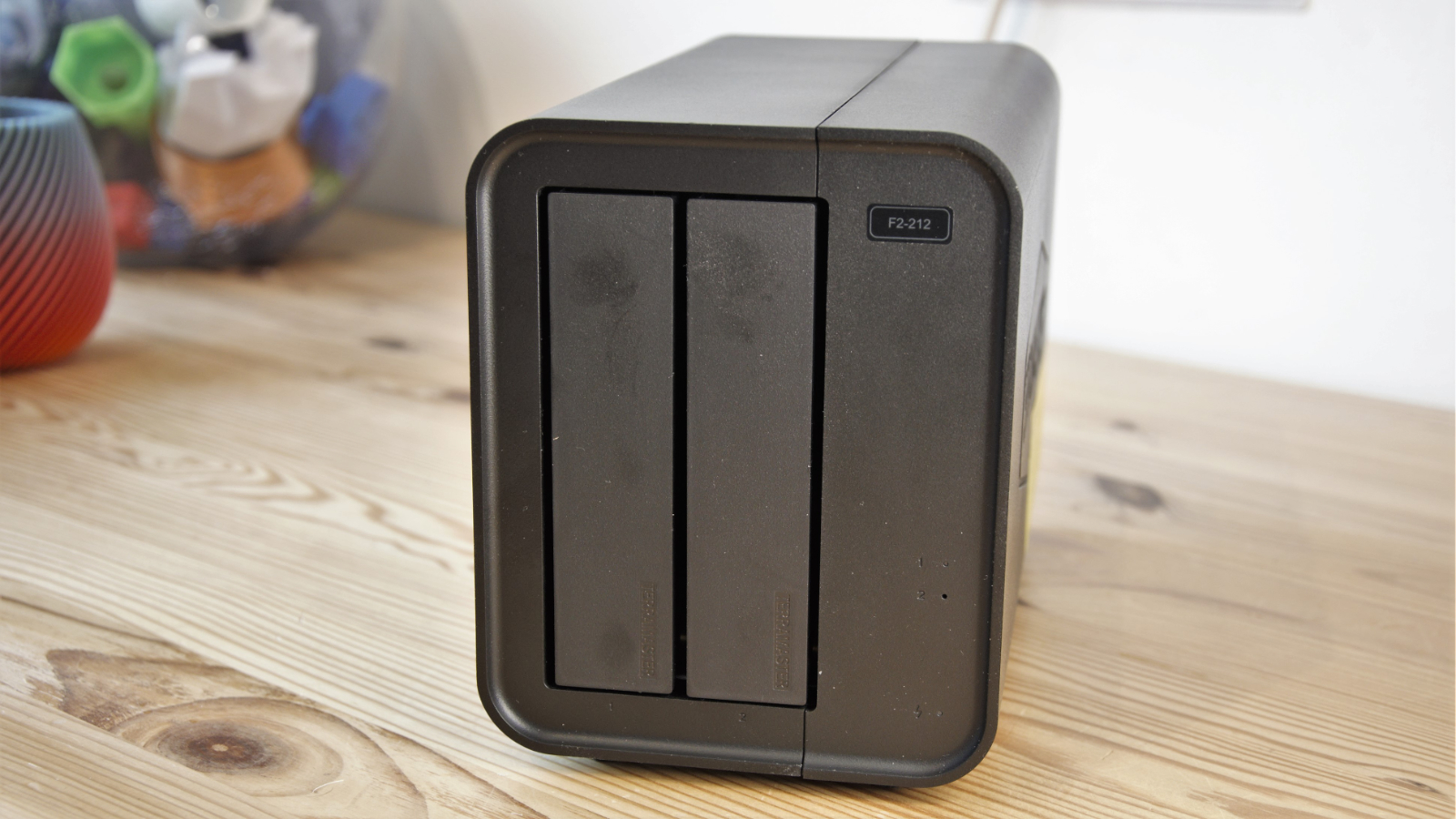
Pros
- New styling
- Quad-core CPU
- Can be upgraded to 2.5GbE LAN
- Supports SSD caching
Cons
- No memory upgrades
- Only one USB 3.2 Gen 1 port
- Drive trays don’t lock
The TerraMaster F2-212 has a difficult task in the NAS market becuase the very similarly specced Synology DS223j is only a little bit more expensive, making it a tempting choice with Synology’s infamous software and a preferable USB layout.
However, there’s lots to like about the F2 so it’s not a no-brainer. For starters, it can be upgraded to 2.5GbE LAN by way of an adapter while the DS223j is limited to Gigabit Ethernet. Transferring files at twice the speed may swing it for many users.
The speed also means using an SSD to cache a large hard drive is a worthwhile option. With support for up to 44TB total storage, this is a great value option for many, we just wish the trays locked and there was more than one USB 3.2 Gen 1 port.
7. QNAP TS-251B – Best Value NAS for HDMI

Pros
- Compact
- HDMI output
- Versatile
Cons
- Behind Synology on apps
The QNAP TS-251B is a great choice for a NAS drive if you’re not looking for one of the cheapest models around. It does the job on the design and build front, but more importantly, offers an excellent range of specs and features.
QNAP might be a little behind Synology on the app front, but the selection is still decent and we’re increasingly impressed with the user interface.
Combined with a powerful processor and HDMI output, this can be used like a tiny PC. It’s a great media player and you can even run office software on it if you like.
8. TerraMaster F5-422 – Best 5-bay NAS

Pros
- Powerful
- 10GbE LAN
- Upgradeable to 12GB RAM
- Five Bays
Cons
- Lacks USB 3.2 Gen 2 ports
- No PCIe slot
- Tricky RAM upgrade
TerraMaster continues to offer excellent value for money in the NAS drive market with attractive alternatives for those who can’t afford Synology or QNAP models.
While the F5-422 might just seem like a 5-bay version of the F4 for more money, there’s a lot that can be done with an extra drive. It doesn’t have a PCIe slot or USB 3.2 Gen 2 but you can cleverly use it as a local storage device as well as a network resource.
With 10GbE LAN, plenty of processing power and the ability to upgrade the RAM to 12GB if you like all add to the charm. The TOS 4.2 OS has got a lot better over time, too.
9. Asustor Lockerstore 2 Gen 2 AS6702T – Feature-packed 2-bay NAS
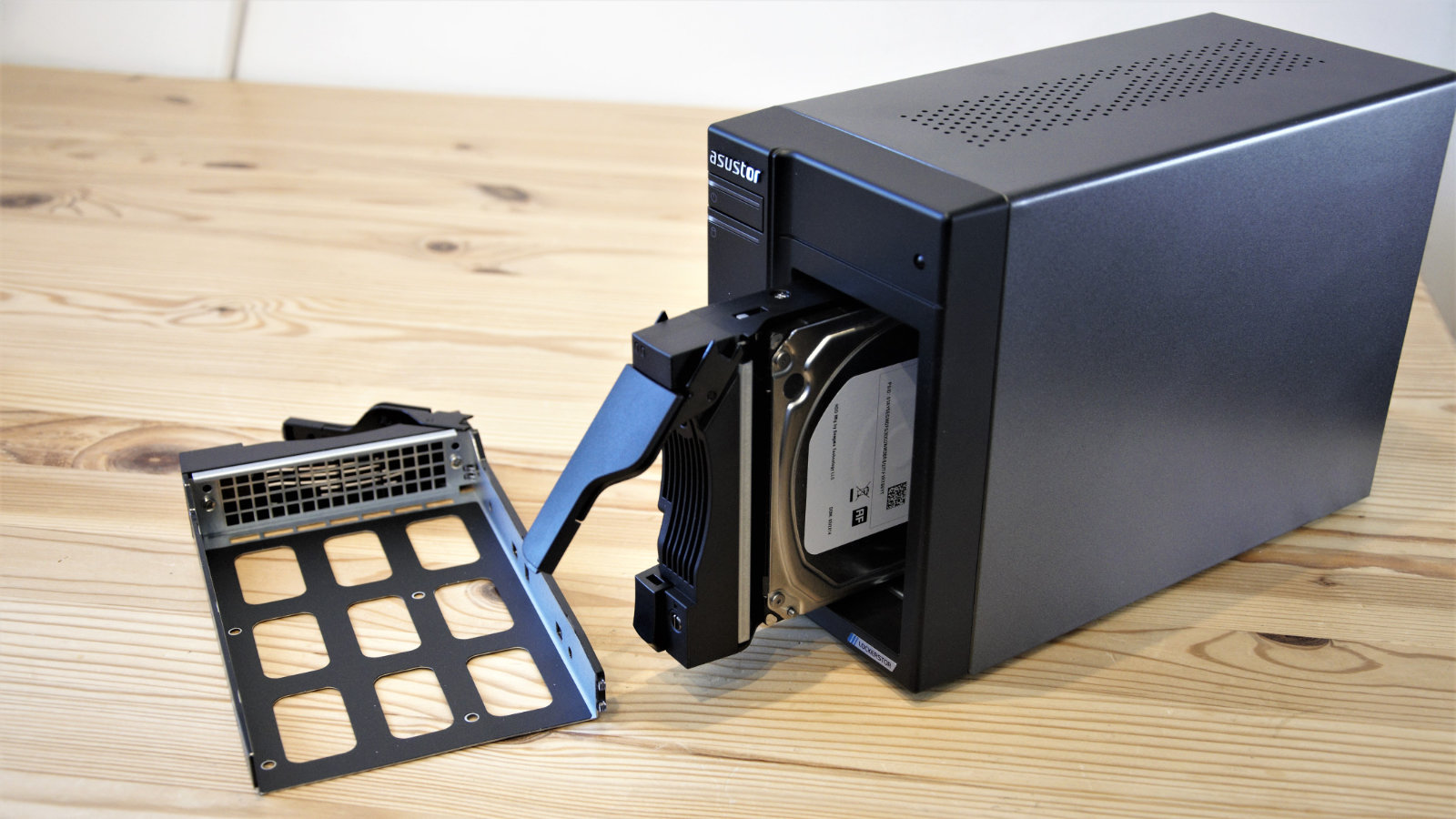
Pros
- Better CPU
- Four NVMe slots for storage or cache
- HMDI 2.0 output
- USB 3.2 Gen 2
Cons
- Full installation requires disassembly
- A little expensive
That Asustor has more enthusiastically embraced 2.5GbE networking, and NVMe storage in this design than Synology has in its products speaks volumes about its ambitions in this sector.
There is a delicate balance between the components here that demonstrates that those designing these machines use them regularly and understand where the performance pinch points exist. It’s perfect if you have one or two very large drives combined with the speedy USB 3.2 Gen 2 ports.
There are also plenty of versatile NVMe slots, HDMI, 2.5GbE ports and more making it a great NAS for a range of situations. It’s just a little expensive and troublesome to dismantle but you’ll likely only do that once.
10. WD My Cloud Home – Best Style

Pros
- Compact & stylish
- DLNA support
- Storage built-in
Cons
- Can't expand storage
The design and styling of the hardware in the My Cloud Home is top-notch, with all its issues lying in the software components provided for it.
The underlying platform is a solid one for which WD hardware engineers should be proud, and the software team needs to better support.
The My Cloud Home can provide DLNA storage to access with a smart TV or a personal cloud solution, but those that want more should consider Synology, QNAP or the higher-end WD My Cloud products.
How to choose a NAS drive
NAS stands for Network Attached Storage. Put simply, it’s a big hard drive that connects to your router so you don’t need to plug directly into it to access the storage.
They make it easy to access your music, movies, photos and documents anywhere at all times. One of the most popular reasons to buy a NAS drive is for media playback. Your personal video library can be viewed on your TV, without having to connect a laptop. A bit like having your own Netflix.
Similarly, you can use an app on your phone to control music playback, much like your own personal Spotify. A NAS drive will use much less power than a regular PC, too. For ease of setup and ease of use, a dedicated NAS drive is hard to beat.
FAQ
What hard disk do I need for a NAS?
One of the first decisions to make is capacity. Try to work out how much storage you need right now, and what you’ll require five years from now. Many NAS drives come with no disks at all – these are known as diskless or bare drives.
The advantage is that you can choose the drives you want and easily upgrade them later on.
You can now get disks up to 12TB in size, and you can expect to pay around $250/£300 for one. A 4TB drive specifically for NAS use will set you back about $100/£100. NAS drives usually cost slightly more than normal PC hard drives, but it’s worth spending the extra because they’re designed to run constantly and tend to have a better warranty.
Hard disks designed for NAS use include more secure construction providing more resistance to vibration, which makes a lot of sense for a drive that’s designed to be on the whole time. They also offer power management so they can adjust performance based on their temperature.
A popular choice is the WD Red range. You can buy the 6TB version for around $100/£150 from Amazon. It’s better to buy two disks and configure them in a RAID (see below), rather than rely on just one disk.
Can I use an SSD in a NAS?
Although it’s common to use a traditional hard drive inside a NAS box, you can use SSDs (solid state drive) in some. You might even be able to use a PCIe NVMe SSD as a cache to improve performance.
However, you should choose an SSD designed for use in a NAS drive such as the Seagate IronWolf or Western Digital Red SA500. Thanks to things like DuraWrite technology, they are purpose-built for continuous use, which is critical inside a NAS.
The downside of choosing SSDs is the limited capacity as they typically max out at 4TB. The other drawback is the much higher cost.
What is a RAID?
RAID stands for redundant array of inexpensive disks. RAID can be quite complex but at a basic level, you’ll want to use it primarily to provide redundancy so if a disk fails your data is still safe. Three of the most popular variants are RAID 1, 5 and 6.
Most NAS drives will offer at least two bays, which means that you can set them up as RAID 1. In this scenario, the second drive is a mirror of the first, so if one drive fails completely all your data is safe on the other. You can then replace the faulty disk, and rebuild the RAID array.
RAID 5 requires at least three drives and offers parity data. That means a RAID 5 array can withstand a single drive failure without losing data or access to data. As data is ‘striped’ across three drives, reads are fast, but at the expense of slower writes because of having to also write the parity data.
RAID 6 meanwhile requires four drives but offers both striped and dual parity, so two drives could fail and the RAID could still recover.
Whichever you choose however, don’t consider your NAS to be the only backup of your data. If the box just dies, or if something catastrophic happens like a fire, you’ll still lose all your data. To mitigate this you’ll want another external backup, preferably to the cloud.
Do NAS drives have apps?
After storage, the next main concern is software and features. We prefer NASes which have an app store where you can download popular apps such as Plex instead of forcing you to use the manufacturer’s own media software.
Some NAS drives also offer apps for Android and iOS, which make it a lot easier to get to your photos, videos and music from your phone or tablet.
Our reviews explain exactly which apps you get with each NAS.
Can I remote access my NAS?
You’ll probably need remote access to the files on your NAS when you’re not at home.
Previously this required signing up to a third-party DNS service, but these days with most NAS drives you can just sign up for an account with the manufacturer as you set up the drive. Log into the account and they’ll handle the connectivity to your box at home using their own servers.
How powerful does your NAS’s processor need to be?
The dedicated OSes that NAS drives run are lightweight, but a faster processor and more RAM will enable features such as transcoding.
This means that any media files can be converted on the fly into a format that’s playable by your TV or set-top box, so you don’t have to worry if it can’t play the file as it exists on your NAS.
It can also be useful if your videos are a higher resolution than your TV can handle, so look out for the ability to transcode 4K to Full HD in real-time.
What ports do I need on a NAS?
Don’t overlook connectivity. If your priority is to use your NAS as a home video server, it might be worth picking one with an HDMI output so you can connect it directly to your TV instead of requiring the video to be streamed across your network.
And if your TV can’t play video from a network source you’ll need a separate media streamer.
For the best performance, go for a model with Gigabit Ethernet, which is 10x as quick as 10/100 Ethernet. Look out for front-mounted USB ports and SD slots too. And on the USB front look for 3.2 Gen 2 which can handle up to 10Gbps.


